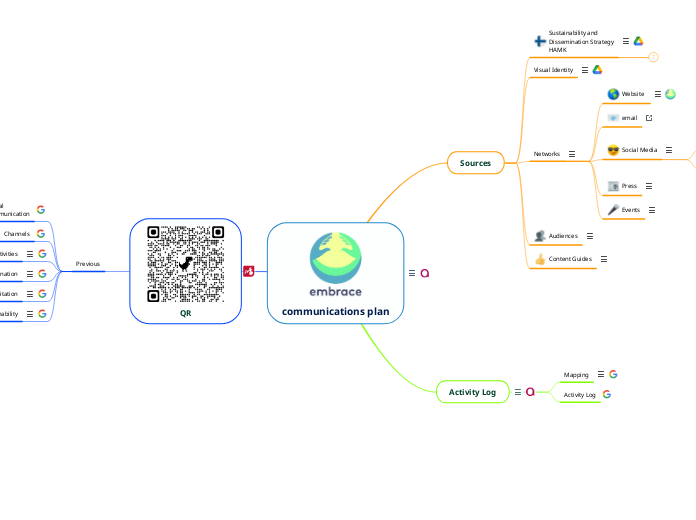por Fernando Naranjo hace 1 año
408
communications plan

por Fernando Naranjo hace 1 año
408

Ver más
Communications Plan
EMBRACE
Education Modernization, Brazil, Colombia, Europe: the new era of cooperation in digital higher education.
Communication is essential for any project and on this point we can focus on the work of EMBRACE. Its objective is to generate relevant information about the project, to inform and promote it to different types of audiences.
When planning a communication strategy, objectives, the public, the types of messages and the channels that would be used were defined. As communication activities, they denote: Website as an essential tool to inform about the project and its results. Social networks to connect with the target audience and promote. Press releases to inform relevant news. Newsletter to manage information to followers about news. Leaflets to communicate basic information. Interviews to expose the project to a wider audience. Among others, which can be used depending on the objectives and the public of the project.
(Image taken from: accelopment)
Sustainability in a communications plan refers to the integration of environmental, social, and governance (ESG) considerations into the development and implementation of a communications strategy. This involves identifying and mitigating the potential negative impacts of the communications plan on the environment, society, and governance, and ensuring that the plan aligns with the organization's overall sustainability goals.
Is it ok, the previous paragraph through our project?
The process of taking advantage of the exploitation within communications planning can only start when the research findings are available. This approach is oriented towards the specific use of research results for commercial, social and political purposes. Depending on the nature and size of the project, there is a wide range of results that can be exploited, ranging from policy suggestions to standardization initiatives.
Exploitation, in this context, refers to the action of making use of and benefiting from project results. In this plan, exploitation illustrates what such results are and suggests the strategy of how to make the most use of them. The plan will be revisited regularly, and is thus understood as a living document, as developments during the course of the project may open up new avenues for exploitation.
Dissemination is the process of making the results of a project known and accessible to an objective public. Therefore, this is the way to share the fruits of a project with the world.
There are a myriad of activities to be carried out for dissemination, such as: Publications in scientific journals, Exhibitions, Conferences, Presentations, Collaboration with other organizations, Training, Technology transfer, among others.
The project results are disseminated throughout the project lifespan:
The communication adapts to the needs of EMBRACE and to the changes caused. For this reason, it can be said that this is an activity in continuous beta, so it is important to regularly evaluate the communication strategy and make the necessary adjustments.
The information generated by communication seeks to be relevant, knowing the characteristics of the needs of the target audiences and adapting the information to the interests of the participating universities, recognizing that not all audiences have the same information needs.
By capturing the need to plan a communication strategy, this helps to ensure that it is effective and efficient, and in addition that it can be evaluated periodically, to identify opportunities for improvement. This, as a tool, is key to the success of the project, generating relevant information and promoting the project among different audiences.
(Image taken from: accelopment)
(Images taken from: accelopment)
Forms:
Some guidelines
KPIs
KPIs
KPIs
KPIs
Partners Websites
...
"Areandina leads the dissemination activities together with IFSP and the Coordinator HAMK. Areandina together with HAMK is responsible for the Sustainability and Dissemination Strategy, the follow up and reporting of the dissemination activities as well as the creation of the visual image for the project, such as logo, website, document templates and other dissemination materials. Areandina is also responsible for communicating with the Colombian associated partners, whereas IFSP communicates with the Brazilian associated partners. IFSP together with HAMK is responsible for choosing journal/publication platforms and coordinating article writing, as well as hosting the final seminar in São Paulo."
UFABC
IFES
Braganza
UTP
Draft Presentation WP5
Promote and disseminate the educational project financed by Erasmus+, as well as share the achievements and results obtained.